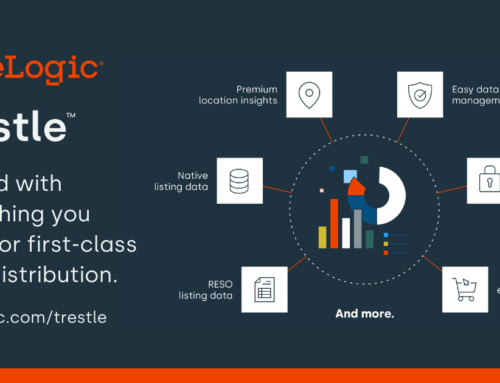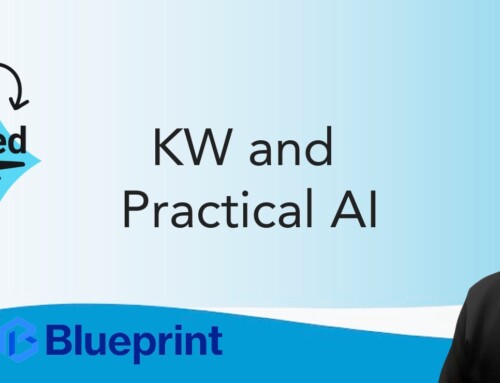An industry colleague recently wrote a post called “Killin’ the dream.” Full disclosure: the author, Jessica Swesey at 1000watt, is a stellar writer and creative content wunderkind whom I have admired greatly for many years and still do today.
Her thesis is that using the phrase “American Dream” to describe homeownership is a worn-out concept. She wrote, “Overused metaphors reach a point of dilution where they no longer hold any meaning, or have an impact.”
I want to share a different viewpoint. It stems from deeply personal experiences in the real estate industry, and it’s a view shaped over the last three decades.
Bear with me as I dive into why I feel this way because, for me, the American Dream concept remains as vibrant today as it was 50 years ago. The American Dream of homeownership is alive and well and precisely why I love our industry today and have since the day I became part of it – and it became part of me.
The beginning
Fresh out of grad school from the USC School of Journalism, I landed a job with Great Western Bank. It was then called Great Western Savings and headquartered in Beverly Hills. The 10-story black glass and steel elliptical building had a giant bronze statue of John Wayne on a horse, crafted by Wyoming sculptor Harry Jackson.
John Wayne was Great Western’s first celebrity spokesperson. If you lived in California when his TV ads aired, you remember them to this day. They were legendary. When Wayne died, Great Western went through five different Western film stars before settling on Dennis Weaver (Gunsmoke) as a permanent replacement. And the Wayne family even approved re-broadcasting the ads years later.
The Chairman of Great Western, James Montgomery, also embodied Wayne and Weaver’s Western spirit: honest and trustworthy filled and an ever-present optimistic outlook towards tomorrow.
As a junior PR person, my job was to create a communications program that echoed what we were doing in Marketing and Advertising. I became part of its American Dream machinery: uniting our loan officers with real estate agents. Lending was a referral business that Great Western in the late 80s wanted to dominate – and eventually did. Connecting loan officers with agents was our primary mission, as these were the dream makers.
One of my first projects was to write two companion guides – “How to Shop for a Home” and “How to Shop for a Loan” – because none existed at that time. The National Association of Realtors did not have one, nor did the National Association of Home Builders. (We would eventually distribute over 3 million copies, requested directly by consumers but delivered to them by a local Realtor. A Great Western loan officer designated the Realtor).
I spent the next eight years working side-by-side with some of the smartest people in the real estate business. Together with my marketing colleagues, we all felt part of something bigger than just the awards we won or the accolades we received, especially when Great Western became the No. 3 home mortgage lender in America.
I spent countless hours meeting with loan officers, loan managers, regional directors, senior and executive management to learn the residential lending business. The more I knew, the more I appreciated how we were making people’s lives better – in a huge way.
One moment that stands out to this day was during a television taping of an interview by John McLaughlin for his “One on One” series, who asked Great Western’s Montgomery to describe his residential lending business.
Jim said, “Great Western is in the happiness business; I truly believe that. We help make people happy – that’s our job.”
Joining the A-Team
What Montgomery said that day struck me to my core. We didn’t create loans. We didn’t just help people buy homes. We helped people find happiness. I completely bought into that concept.
That philosophy served me well when Fannie Mae recruited me to move to DC and become a PR Director. Among my duties was heading up communications to support Fannie’s single-family business. The team I was part of included the “best of the best” throughout the firm.
Everything we did was to support the American Dream of homeownership. Even Fannie’s Chairman, Jim Johnson, went on to write a book called, “Showing America a New Way Home,” which also was the theme of our $1 trillion housing initiative, the biggest homeownership effort in our nation’s history.
One small component was hosting multilingual housing fairs across the country. I had the opportunity to meet first-time home buyers that represented the rainbow of America. I listened to their stories and all the questions they had about buying a home. I was in awe of their unshakeable passion, as well as their intense desire and commitment to do whatever it would take to own a home.
For most of the first-time home buyers I met back then, owning a home was still just a dream. But it was one that was obtainable. They just needed to know how to make their dream of homeownership a reality. One story comes to mind that illustrates this point.
Fannie was opening satellite offices around the country. Seattle was on the list and was where my wife wanted to live. She had just become pregnant with our first child while we were in DC when I was hired and transferred to run the new Seattle office.
About a year after we opened the Seattle Fannie Mae office, a woman I guessed was in her early 50s came into our office. She asked me if she could speak with someone, so we sat down to talk. She reached in her purse and pulled out a folded newspaper story from the Seattle Times that announced our office opening from a year ago and handed it to me.
The article described how we would work with local nonprofits and lenders to help low- and moderate-income people buy a home. She then said, “I am single and have been a schoolteacher for over 20 years. I wondered if it would be possible for someone like me to own a home.”
When she said the phrase, “someone like me,” I was stunned. I asked her to explain what she meant, and she told me a story that I will never forget. She said that 20 years ago, she met with a local loan officer at her bank. She described him as an older gentleman. She asked him about applying for a home loan. She told him she was single and a full-time schoolteacher with a steady job and salary. Without asking for a single document, he told her, “It would be better if you waited until you got married.” She said she was embarrassed, walked out, and never thought about homeownership again until she saw the Fannie Mae story in the local paper.
I nearly lost it. I handed her a card from one of our lending partners – it was an all-woman mortgage firm I knew would take excellent care of her. I said, “Why did you wait so long to come in to ask?” She explained she didn’t want to be embarrassed again. I told her that I wish I were around 20 years ago, as she would have been a homeowner much sooner.
Days of Dogfooding
When software developers have to use the software they develop before it’s released broadly, it’s called “dogfooding.” I spent years at Great Western and Fannie Mae as a homeownership evangelist, but I never sold a home and never made a loan.
That opportunity presented itself right after 9/11. My PR business was embedded with internet 1.0 related businesses. I worked with Brad Inman heading up marketing for Inman News and Real Estate Connect when the dotcom industry went bust. I felt I had to make a move. So, I decided to practice what I had been preaching for years.
I asked my island neighbor and dear friend Tom Kelly, a national real estate columnist (and now a fabulous fiction author), if I should become a Realtor or a loan officer. He said, “There are a lot of good real estate agents on Bainbridge, but not many good loan officers.”
I would spend the next eight and a half-years using all the tools and tactics I had provided to others. Fortunately, they worked, and I was soon a top producing loan officer.
The lessons I learned and the experiences I gained would confirm how I feel – deeply – about our business because there is no more incredible feeling than helping someone achieve their dream of homeownership.
And for the majority of the first-time buyers whom I worked with, owning a home did start as a dream. No way were they ready and capable of buying a home. Together, we developed a game plan – all the steps they needed to take, the boxes they needed to check – to turn their dream into a reality, and one that would endure.
I still have the thank you letters and surveys with their comments on file in my office. If I ever question why I do what I do today in the industry we all work in, I open that file and review what they said.
There was the retired woman I helped who endured the challenge of a no-down USDA loan that took our government three months to approve. Or the clueless young couple who tried to buy without using an agent (despite my best counsel) and eventually made it through a Murphy’s Law transaction. At the end of each transaction, the feeling of joy and accomplishment was next-level rewarding and fulfilling.
I attended every single closing for every buyer – including one where the title rep drove me in their SUV through two feet of snow to get to a house just before Christmas to sign the first-time buyers, who had a new set of twins, in order to close before the end of the year.
We shouldn’t kill the Dream
The American Dream may be a cliché to some, but to me, it will never be first-level creativity; it will remain a path that millions will take towards homeownership to make their dream a reality. I, like many others, love this part of our business the most.
From the incredible disappointments to the still ridiculously archaic process that we still endure, we will do it all again because of what it means in the end.
# # #
You can read Jessica’s blog here.




